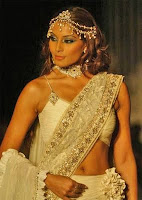





Tanjore painting (
Tamil Language: தஞ்சாவூர் ஓவியம், Thanjavur Oviyam) is an important form of classical
South Indian painting native to the town of
Thanjavur (anglicized as Tanjore) in
Tamil Nadu. The art form dates back to about 1600 AD, a period when Nayakas of Tanjavur encouraged art—chiefly, classical dance and music—as well as literature both in Telugu and Tamil. Tanjore Paintings are known for their surface richness, vivid colours and compact composition. Essentially serving as devotional icons, the themes of most of these paintings are
Hindu gods and goddesses, and saints as well. Episodes from Hindu tradition are drawn upon as elaboration to the main figure / figures placed in the central section of the picture. Tanjore paintings are in fact panel paintings (done on solid wood planks ) and hence were also referred to as 'palagai padam'( palagai - wooden plank ; padam- picture) in local parlance. In modern times, these paintings have become a much sought after as souvenir during festive occasions in South India; or as pieces to decorate the walls ; or as collectors' item by art lovers.
The process of making a Tanjore painting involves many stages. The first stage involves the making of the preliminary sketch of the image on the base. The base consists of a cloth pasted over a wooden base. Then chalk powder or
zinc oxide is mixed with water-soluble
adhesive and applied on the base. To make the base smoother, a mild
abrasive is sometimes used. After the drawing is made, decoration of the jewellery and the apparels in the image is done with semi-precious stones also known as Jaipur stones. Laces or threads are also used to decorate the jewellery. On top of this, the gold foils are pasted. Finally,
dyes are used to add colors to the figures in the paintings.
High quality gold foil is used to ensure the paintings lasts generations and becomes family heirlooms. They generally appreciate in value and are considered collectibles. Paintings come in three finishes, Classic, Antinque Style and Embossed. In the classic finish, bold colors and striking backgrounds are combined with high glitter gold foil, while in the antique style, the gold's glitter is more sober with more subtle colors and plain backgrounds. The emboss paintings are similar to the classic style but are super embossed to bring about more depth.
Thanjavur Paintings are made on canvasses. The CANVAS for a Thanjavur painting is usually a plank of wood (originally wood of the Jackfruit tree was used, now it's plywood) over which a layer of cloth is pasted with arabic gum. The cloth is then evenly coated with a paste of limestone and a binding medium and let to dry. The canvas is now ready for painting. The artist then draws a detailed sketch of the painting on the canvas. A paste, made of limestone and a binding medium, is used to create 3D effect in embellishing and ornamenting the theme using a brush. Gold leaves and gems of varied hues are used in selected areas like pillars, arches, thrones, dresses, etc. The shine and glean of the gold leaves used by the Thanjavur style paintings last forever. Finally, colours are applied on the sketch. In the past, artists used natural colours like vegetable dyes, whereas the present day artists use chemical paints which enhance the sharpness and provide better shade contrasts. The old Tanjore artists restricted their scope to divine figures and used to mix their natural colours.
The modern ones have, of course, no need to do so. What has survived in this convention is the choice of colours for painted personalities or objects. For outlines dark brown is usually used. Red is favoured for the background. Scholars say that a red background is the distinctive mark of Tanjore paintings, but green is also sometimes used. Lord Vishnu, appropriately enough, is coloured blue, and Lord Nataraja chalk white. Yellow is used for the Goddesses. The sky, of course, is blue, but black is employed on occasions. There are conventions in regard to the use of embossing and bejewelling. But these do not appear to be followed very strictly these days. Often individual preference settles the matter. The portrayals of the figures in the paintings are breathtakingly brilliant. Almost all the figures have rounded bodies and almond-shaped eyes, which is unique to THANJAVUR PAINTING. The traditional thanjavur artists have a flair for ornamenting the figures with jewellery and ornate dresses. Thanjavur paintings are notable for their adornment in the form of glass pieces embedded in parts of them.




















